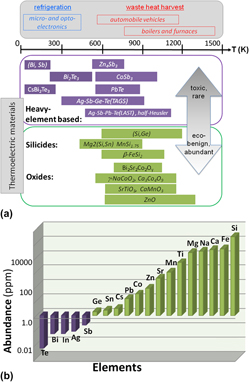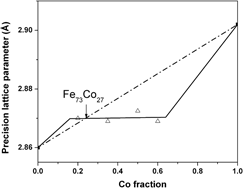Refine search
Actions for selected content:
106100 results in Materials Science
Simulation of hyperdimensional waveguide models demonstrates new approach in metamaterial design
-
- Journal:
- MRS Bulletin / Volume 36 / Issue 8 / August 2011
- Published online by Cambridge University Press:
- 16 August 2011, p. 573
- Print publication:
- August 2011
-
- Article
-
- You have access
- HTML
- Export citation
Atomically smooth polycrystalline silicon waveguides fabricated
-
- Journal:
- MRS Bulletin / Volume 36 / Issue 8 / August 2011
- Published online by Cambridge University Press:
- 16 August 2011, pp. 579-580
- Print publication:
- August 2011
-
- Article
-
- You have access
- HTML
- Export citation
In Memoriam: Robert L. Fleischer
-
- Journal:
- MRS Bulletin / Volume 36 / Issue 8 / August 2011
- Published online by Cambridge University Press:
- 16 August 2011, p. 580
- Print publication:
- August 2011
-
- Article
-
- You have access
- HTML
- Export citation
CAREER CENTRAL
-
- Journal:
- MRS Bulletin / Volume 36 / Issue 8 / August 2011
- Published online by Cambridge University Press:
- 16 August 2011, pp. 658-663
- Print publication:
- August 2011
-
- Article
-
- You have access
- Export citation
LOOK AGAIN…
-
- Journal:
- MRS Bulletin / Volume 36 / Issue 8 / August 2011
- Published online by Cambridge University Press:
- 16 August 2011, p. 664
- Print publication:
- August 2011
-
- Article
-
- You have access
- HTML
- Export citation
Magnetofluidics used for tuning optical fibers
-
- Journal:
- MRS Bulletin / Volume 36 / Issue 8 / August 2011
- Published online by Cambridge University Press:
- 16 August 2011, p. 576
- Print publication:
- August 2011
-
- Article
-
- You have access
- HTML
- Export citation
Nano Focus: Electron clouds distortion on graphene surface harm conductivity
-
- Journal:
- MRS Bulletin / Volume 36 / Issue 8 / August 2011
- Published online by Cambridge University Press:
- 16 August 2011, p. 579
- Print publication:
- August 2011
-
- Article
-
- You have access
- HTML
- Export citation
MRS Communications publishes inaugural article: www.mrs.org/mrc
-
- Journal:
- MRS Bulletin / Volume 36 / Issue 8 / August 2011
- Published online by Cambridge University Press:
- 16 August 2011, p. 657
- Print publication:
- August 2011
-
- Article
-
- You have access
- HTML
- Export citation
Nano Focus: Micro drum chilled to quantum ground state
-
- Journal:
- MRS Bulletin / Volume 36 / Issue 8 / August 2011
- Published online by Cambridge University Press:
- 16 August 2011, p. 578
- Print publication:
- August 2011
-
- Article
-
- You have access
- HTML
- Export citation
Functionalized nanoporous particles allow single-step purification of DNA reactions
-
- Journal:
- MRS Bulletin / Volume 36 / Issue 8 / August 2011
- Published online by Cambridge University Press:
- 16 August 2011, p. 583
- Print publication:
- August 2011
-
- Article
-
- You have access
- HTML
- Export citation
Structural origin of the different glass-forming abilities in ZrCu and ZrNi metallic glasses
-
- Journal:
- Journal of Materials Research / Volume 26 / Issue 16 / 28 August 2011
- Published online by Cambridge University Press:
- 29 July 2011, pp. 2098-2102
- Print publication:
- 28 August 2011
-
- Article
- Export citation
Thermoelectric properties of superlattice materials with variably spaced layers
-
- Journal:
- Journal of Materials Research / Volume 26 / Issue 15 / 14 August 2011
- Published online by Cambridge University Press:
- 29 July 2011, pp. 1993-2000
- Print publication:
- 14 August 2011
-
- Article
- Export citation
Size-dependent lattice parameters of microstructure-controlled Sn nanowires
-
- Journal:
- Journal of Materials Research / Volume 26 / Issue 16 / 28 August 2011
- Published online by Cambridge University Press:
- 29 July 2011, pp. 2033-2039
- Print publication:
- 28 August 2011
-
- Article
- Export citation
Pulsed laser deposition and thermoelectric properties of In- and Yb-doped CoSb3 skutterudite thin films
-
- Journal:
- Journal of Materials Research / Volume 26 / Issue 15 / 14 August 2011
- Published online by Cambridge University Press:
- 29 July 2011, pp. 1836-1841
- Print publication:
- 14 August 2011
-
- Article
- Export citation
Introduction
-
- Journal:
- Journal of Materials Research / Volume 26 / Issue 15 / 14 August 2011
- Published online by Cambridge University Press:
- 28 July 2011, pp. 1743-1744
- Print publication:
- 14 August 2011
-
- Article
- Export citation
RuIn3-xSnx, RuIn3-xZnx, and Ru1-yIn3—new thermoelectrics based on the semiconductor RuIn3
-
- Journal:
- Journal of Materials Research / Volume 26 / Issue 15 / 14 August 2011
- Published online by Cambridge University Press:
- 27 July 2011, pp. 1886-1893
- Print publication:
- 14 August 2011
-
- Article
- Export citation
Ferromagnetic resonance on Ni nanowire arrays
-
- Journal:
- Journal of Materials Research / Volume 26 / Issue 17 / 14 September 2011
- Published online by Cambridge University Press:
- 27 July 2011, pp. 2169-2174
- Print publication:
- 14 September 2011
-
- Article
- Export citation
Single crystallization of Ba8AlxSi46−x clathrate for improvement of thermoelectric properties
-
- Journal:
- Journal of Materials Research / Volume 26 / Issue 15 / 14 August 2011
- Published online by Cambridge University Press:
- 27 July 2011, pp. 1857-1860
- Print publication:
- 14 August 2011
-
- Article
- Export citation
Oxide thermoelectrics: The challenges, progress, and outlook
-
- Journal:
- Journal of Materials Research / Volume 26 / Issue 15 / 14 August 2011
- Published online by Cambridge University Press:
- 27 July 2011, pp. 1762-1772
- Print publication:
- 14 August 2011
-
- Article
- Export citation
Nanocrystallization of amorphous (Fe1-xCox)88Zr7B4Cu1 alloys and their soft magnetic properties
-
- Journal:
- Journal of Materials Research / Volume 26 / Issue 16 / 28 August 2011
- Published online by Cambridge University Press:
- 27 July 2011, pp. 2065-2071
- Print publication:
- 28 August 2011
-
- Article
- Export citation









